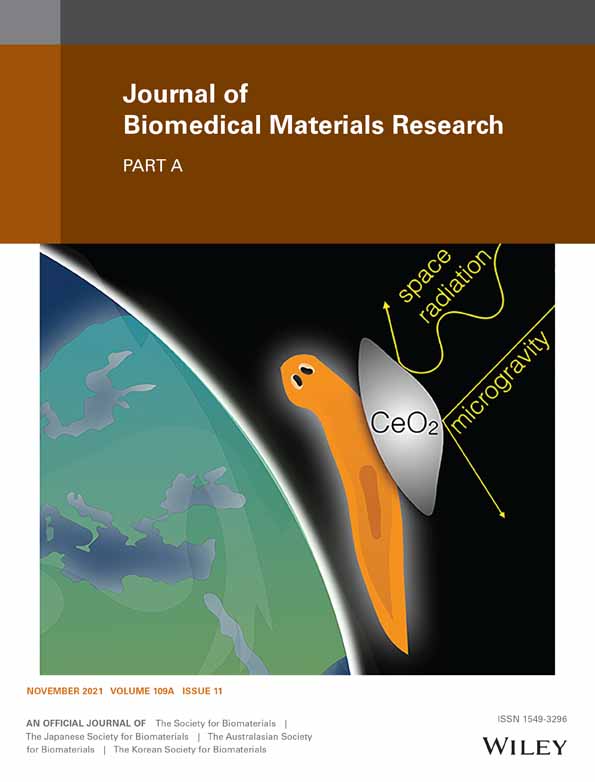Assessment of electrospun cardiac patches made with sacrificial particles and polyurethane-polycaprolactone blends
Funding information: American Heart Association, Grant/Award Number: 19POST34380541; National Institutes of Health, Grant/Award Numbers: 5T32HL072738-16, HL130436; National Science Foundation, Grant/Award Number: DGE-1553798
Abstract
Congenital heart defects (CHDs) are the leading cause of death in live-born infants. Currently, patches used in the repair of CHDs are exclusively inert and non-degradable, which increases the risk of arrhythmia, follow-up surgeries, and sudden cardiac death. In this preliminary study, we sought to fabricate biodegradable scaffolds that can support cardiac regeneration in the repair of CHDs. We electrospun biodegradable scaffolds using various blends of polyurethane (PU) and polycaprolactone (PCL) with and without sacrificial poly(ethylene oxide) (PEO) particles and assessed the mechanical properties, cell infiltration levels, and inflammatory response in vitro (surface cell seeding) and in vivo (subcutaneous mouse implant). We hypothesized that a blend of the two polymers would preserve the low stiffness of PU as well as the high cell infiltration observed in PCL scaffolds. The inclusion of PU in the blends, even as low as 10%, decreased cell infiltration both in vitro and in vivo. The inclusion of sacrificial PEO increased pore sizes, reduced Young's moduli, and reduced the inflammatory response in all scaffold types. Collectively, we have concluded that a PCL patch electrospun with sacrificial PEO particles is the most promising scaffold for further assessment as in our heart defect model.
CONFLICT OF INTEREST
The authors declare no potential conflicts of interest.
Open Research
DATA AVAILABILITY STATEMENT
The data that support the findings of this study are available from the corresponding author upon reasonable request.




